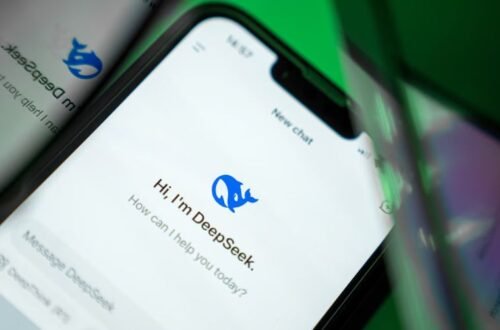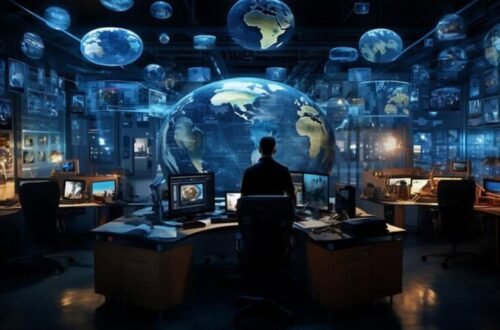In a time when almost every word has a meaning, history, and dictionary definition, dydibll emerges as a fascinating enigma. At first glance, it looks like a typo or an accidental keyboard mash, yet it stirs curiosity with its symmetrical structure and peculiar sound. Unlike conventional language, dydibll doesn’t have a traceable origin or a clear purpose, which paradoxically gives it power. It doesn’t belong to any particular language, culture, or field—it simply exists. This vagueness makes it intriguing to digital creatives and curious minds alike, who view it as a linguistic canvas ready to be painted with meaning.
Unpacking dydibll: A Symbol of Modern Expression
To understand the allure of dydibll, one must let go of the desire for conventional definition. It’s not about what the word means, but what it could mean. This quality reflects a broader trend in online culture where randomness and absurdity often eclipse traditional structure. In many ways, dydibll is a product of a generation that values creativity over conformity. It resonates with those who live in memes, communicate in emojis, and see the internet as a playground of imagination. In that context, dydibll becomes more than just a string of letters—it becomes a vessel for expression.
The Rise of Abstract Language in Digital Culture
Language in the digital age has evolved from formal grammar to playful, chaotic shorthand. New words, slang, and acronyms emerge daily, often born out of nothing more than humor or viral content. dydibll fits seamlessly into this evolving lexicon. It’s the kind of word that could appear in a meme, a Discord server, or a TikTok caption, making it part of the ever-expanding vocabulary of the internet. Its abstract nature gives it a sort of linguistic freedom—free from structure, rules, and even meaning. That freedom makes it ripe for interpretation, much like abstract art.
Theoretical Interpretations of dydibll: Could It Be an Acronym?
While dydibll has no known definition, that hasn’t stopped people from giving it one. Some have proposed that it could stand for something—Dynamic Youth Driving Innovation Beyond Language Limits, for instance. Though this is entirely speculative, it showcases how people naturally try to assign structure to chaos. These reinterpretations highlight how adaptable the word is. In one context, it might represent digital creativity; in another, a secret society or a fictional world. This flexible identity contributes to its viral appeal and strengthens its hold in digital spaces.
From Randomness to Relevance: How dydibll Went Viral
The internet thrives on oddities. Words like “yeet,” “sus,” or “zaddy” were once gibberish too, until culture gave them meaning. dydibll may be following a similar path. It has shown up in meme culture, hashtags, and even digital art projects. The randomness of the word itself seems to be part of its charm. It’s a kind of linguistic inside joke—those who use it don’t necessarily define it, but they share a mutual understanding that it’s something “cool,” “weird,” or “meta.” That shared ambiguity forms a kind of community identity, which is powerful in online spaces.
The Linguistic Aesthetic of dydibll: Why It Works
Phonetically, dydibll has a strange but satisfying sound. It starts and ends with soft consonants, while the presence of repeating letters like “d” and “l” give it rhythm and structure. These factors make it catchy, almost like a brand name or product title. It feels futuristic, like something out of a sci-fi universe or a synthetic language built by AI. That makes it incredibly versatile—it can be playful, mysterious, or even philosophical. When spoken aloud, it feels foreign and familiar all at once, which is part of its enduring appeal.
Dydibll in Pop Culture and Creative Arts
Digital artists, musicians, and writers have started to incorporate dydibll into their work, often using it as a title or thematic motif. It shows up in experimental music playlists, abstract paintings, and even indie video game lore. Its lack of predefined meaning allows creators to mold it into whatever they want. A dystopian city? A rogue AI? A secret underground movement? dydibll can be all of those things. Its adaptability in artistic contexts makes it an ideal symbol for creativity without constraints—an anchor for narratives that thrive on open-ended storytelling.
Social Media’s Role in Elevating dydibll
Hashtags like #dydibll are slowly becoming more common, especially in spaces that celebrate internet absurdity and creativity. Platforms like TikTok and Instagram are ideal for showcasing such abstract concepts, often through humor, irony, or even cryptic poetry. The word has become a kind of identifier for those “in the know,” adding to its underground coolness. On Twitter and Discord, it’s sometimes used in bios or usernames, adding an air of mystique. It’s like the digital equivalent of an inside joke—meaningful to those who embrace its chaos.
Philosophical Undertones of dydibll: A Word Without Borders
There’s something almost philosophical about dydibll. It challenges our instinct to label and categorize. In a way, it mirrors the human condition in the digital age—chaotic, undefined, and constantly evolving. It reflects the desire to break free from linear thinking and embrace the unknown. Some people see it as a symbol of digital freedom, a rejection of old linguistic systems. Others see it as a mirror of the modern mind—restless, inventive, and unafraid to break the rules. Either way, dydibll represents a shift in how we think about language itself.
Could dydibll Become the Next Digital Movement?
Movements often begin with a shared idea or phrase that resonates emotionally. While dydibll may seem too absurd for that role, its very absurdity makes it relatable in an age of information overload. It gives people a chance to play with identity, meaning, and communication without the baggage of conventional language. If it continues to grow in popularity, dydibll could become a digital emblem—used in branding, storytelling, and even community building. Its potential lies in its ability to remain undefined, which ironically gives it infinite uses.
Dydibll as a Literary and Storytelling Tool
Authors exploring speculative fiction, cyberpunk, or surreal genres may find dydibll an attractive tool. It’s ambiguous enough to name a dystopian corporation or an alien species. In fanfiction and world-building communities, it offers a blank slate for names, locations, or abstract ideas. Its vagueness adds to its mystique, and writers love words that let readers fill in the blanks. In this sense, dydibll becomes more than a placeholder—it becomes a deliberate tool to provoke thought, curiosity, or even discomfort.
The Future of dydibll in Online and Offline Spaces
As language continues to evolve alongside technology, words like dydibll will likely play a bigger role in how we communicate online. It may evolve into slang, or perhaps a community will assign it a deeper, shared meaning. There’s also potential for it to transcend the digital space and enter real-world branding or subcultures. Just like “Google” or “Reddit,” dydibll could move from nonsense to necessity. The only limit is how far people are willing to take it—and based on its current momentum, the sky’s the limit.
Conclusion
Dydibll is more than a jumble of letters—it’s a cultural phenomenon waiting to be defined. It thrives on ambiguity, invites creativity, and refuses to fit into a neat box. Whether you see it as art, a meme, or a code word, it challenges the norms of language and identity in the digital age. As we continue to explore new forms of self-expression, dydibll might just be the linguistic symbol we didn’t know we needed. It represents freedom, randomness, and imagination—all wrapped up in one unforgettable, undefinable word.




